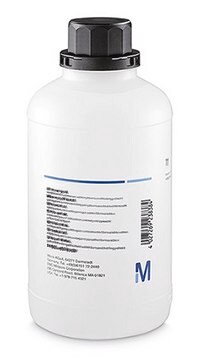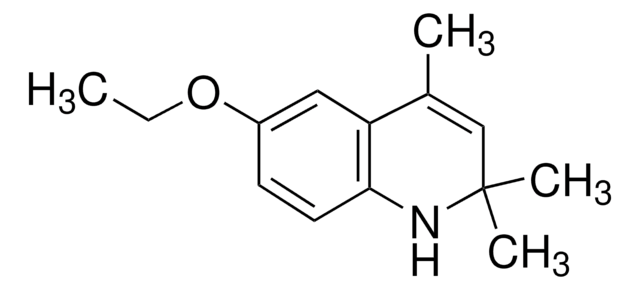B1212000
Hidroxianisol butilado
European Pharmacopoeia (EP) Reference Standard
Sinônimo(s):
2(3)-t-Butil-4-hidroxianisol, 2(3)-t-Éter monometílico de butil-hidroquinona, BHA
About This Item
Produtos recomendados
grau
pharmaceutical primary standard
densidade de vapor
6.2 (vs air)
família API
butylhydroxyanisole
temperatura de autoignição
599 °F
fabricante/nome comercial
EDQM
pf
58-60 °C (lit.)
aplicação(ões)
cleaning products
cosmetics
food and beverages
personal care
pharmaceutical (small molecule)
Formato
neat
cadeia de caracteres SMILES
O(C)c1cc(c(cc1)O)C(C)(C)C
InChI
1S/C11H16O2/c1-11(2,3)9-7-8(13-4)5-6-10(9)12/h5-7,12H,1-4H3
chave InChI
MRBKEAMVRSLQPH-UHFFFAOYSA-N
Procurando produtos similares? Visita Guia de comparação de produtos
Descrição geral
Aplicação
Embalagem
Outras notas
produto relacionado
Frases de perigo
Declarações de precaução
Classificações de perigo
Aquatic Chronic 2
Código de classe de armazenamento
11 - Combustible Solids
Classe de risco de água (WGK)
WGK 2
Ponto de fulgor (°F)
241.9 °F - Pensky-Martens closed cup
Ponto de fulgor (°C)
116.6 °C - Pensky-Martens closed cup
Escolha uma das versões mais recentes:
Certificados de análise (COA)
It looks like we've run into a problem, but you can still download Certificates of Analysis from our Documentos section.
Se precisar de ajuda, entre em contato Atendimento ao cliente
Já possui este produto?
Encontre a documentação dos produtos que você adquiriu recentemente na biblioteca de documentos.
Os clientes também visualizaram
Nossa equipe de cientistas tem experiência em todas as áreas de pesquisa, incluindo Life Sciences, ciência de materiais, síntese química, cromatografia, química analítica e muitas outras.
Entre em contato com a assistência técnica





